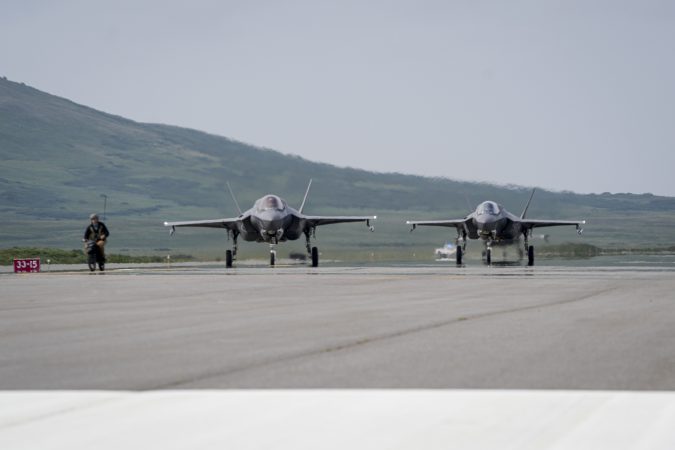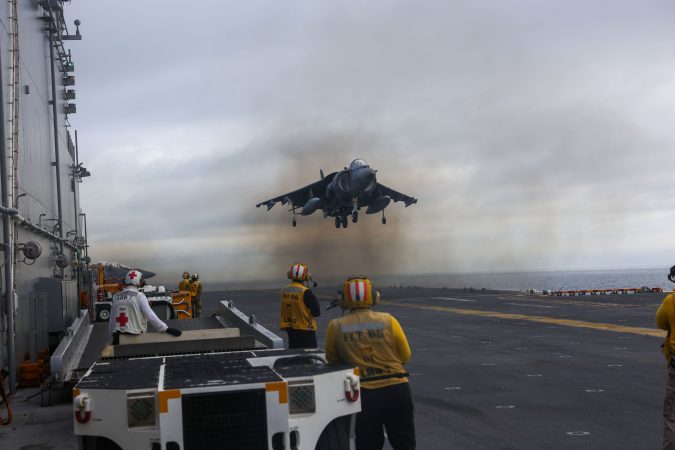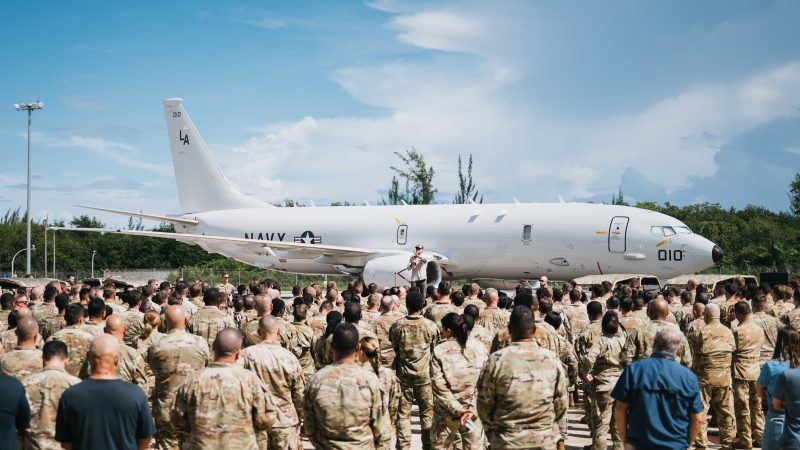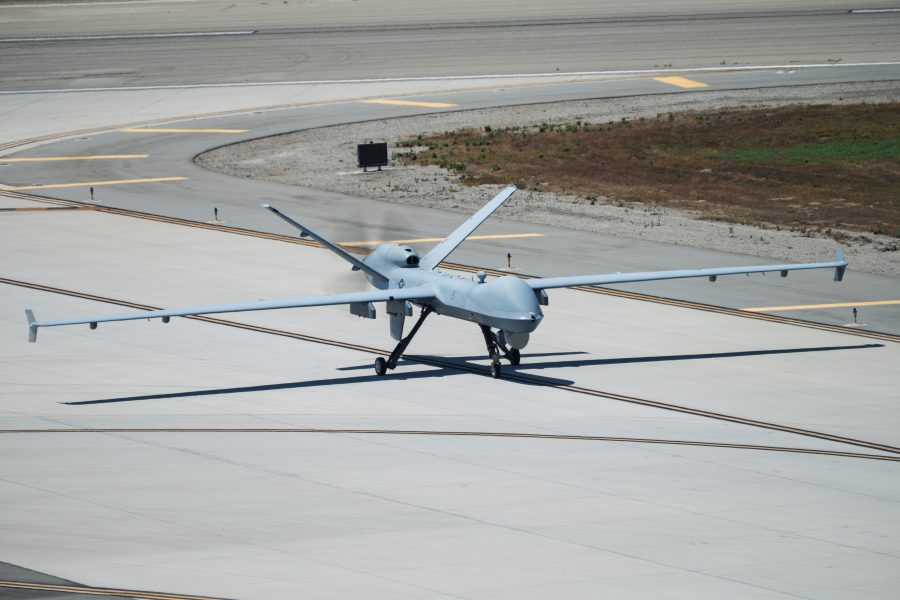The U.S. military is deploying significant airpower in the Caribbean one week after carrying out an airstrike on what it said was a boat operated by a Venezuelan drug cartel.
MQ-9 Reaper drones have been stationed in Puerto Rico, according to open-source imagery. The Pentagon is also planning to send F-35 Lightning II stealth fighters to the island, U.S. officials said. Numerous C-17 Globemaster III cargo aircraft, as well as KC-135 Stratotanker and KC-46 Pegasus aerial refuelers, have also been flying to bases in the region.
The MQ-9s have been spotted at Rafael Hernández International Airport in Puerto Rico. That airfield is home to Coast Guard Air Station Borinquen, but the Coast Guard does not operate MQ-9s.
At least one Reaper was photographed on Sept. 4, and armed with what appeared to be Hellfire air-to-surface missiles, by the news agency Reuters.
On Sept. 9, two MQ-9s at the Coast Guard air station were spotted by the commercial satellite firm Satellogic and shared on the social media platform X by MT Anderson, an account known for tracking military aircraft and vessels through open-source overhead imagery. Puerto Rico also hosts an Air National Guard base at Luis Muñoz Marín International Airport.
People familiar with the matter told Air & Space Forces Magazine the Pentagon plans to station 10 F-35s on an airfield in Puerto Rico. It is yet unclear if those fighters will be Marine Corps F-35B models or Air Force F-35A jets, but some have suggested they will be USMC aircraft. The Marines’ F-35B is a short-takeoff and vertical-landing aircraft, but the service sometimes operates from air bases with full-size runways.

The U.S. is also bulking up its logistics footprint in the area, possibly to support the incoming combat aircraft. Frequent C-17, KC-135, and KC-46 flights have gone to Puerto Rico and the U.S. Virgin Islands, which hosts an Air National Guard base, this month.
The Navy’s Wasp-class amphibious assault ship USS Iwo Jima has been known to be operating near Puerto Rico, having been at sea for almost a month.
The Iwo Jima is embarked with vertical or short takeoff and landing AV-8B Harrier fighter jets, assigned to the “Thunder Chickens” of Marine Medium Tiltrotor Squadron 263. Sailors and Marines assigned to the Iwo Jima Amphibious Ready Group and its associated 22nd Marine Expeditionary Unit began their deployment Aug. 14.

U.S. Southern Command, which oversees forces in the region, did not respond to a request for comment on the deployment of land-based military aircraft.
Secretary of Defense Pete Hegseth and Chairman of the Joint Chiefs of Staff Air Force Gen. Dan Caine visited Air National Guardsmen, Sailors, and Marines at Muñiz Air National Guard Base, Puerto Rico, and on the Iwo Jima Sept. 9. Hegseth was pictured standing in front of a U.S. Navy P-8 Poseidon maritime surveillance aircraft during his visit to the base.
“You, right now—here in Puerto Rico and around the Caribbean—are on the front lines for the American people,” Hegseth said, according to an account of his remarks made during trip—which, breaking with custom, was not announced in advance—released by the Pentagon.

The mission has already stirred debate, much of which has focused on a Sept. 2 airstrike that the U.S. carried out against a small boat in the Caribbean. Trump said that the operation targeted “narcoterrorists” from the Venezuelan gang Tren de Aragua and their shipment of drugs.
The strike, which killed 11 people, was carried out by drone, according to Sen. Rand Paul (R-Ky.), a member of the Senate Foreign Relations Committee. That would mean the strike was almost certainly conducted by MQ-9, such as the ones stationed in Puerto Rico. Unclassified video of the strike released by the Trump administration shows a missile hitting the vessel from above.
Paul questioned, however, why the U.S. did not intercept and board the boat to search it before using lethal force and has challenged its legality.
“We have dozens of ships every day stopped for drugs. Is the new policy going to be to blow them to smithereens with drones?” Paul told Fox News Sept. 10.
That criticism has been echoed by numerous Democratic members of Congress, who say they have been given little information about the operation.
“We are a nation of laws, not of one man’s whims. Donald Trump does not have the authority to order strikes in international waters,” said Rep. Gregory Meeks (D-N.Y.), the ranking Democrat on the House Foreign Affairs Committee.
Following a classified briefing to Congressional staff, several media organizations reported that the boat had apparently turned around after sensing it was being tracked from the air and was returning to shore when it was stuck.
Trump administration officials have not publicly discussed the details of the mission. But senior administration officials, including Hegseth, have said that Trump has the authority to take military action as commander-in-chief and that drug shipments are a valid target.
”We knew exactly who was in that boat,” Hegseth said on Fox News on Sept. 3. “We know exactly what they were doing, and we knew exactly who they represented.”


